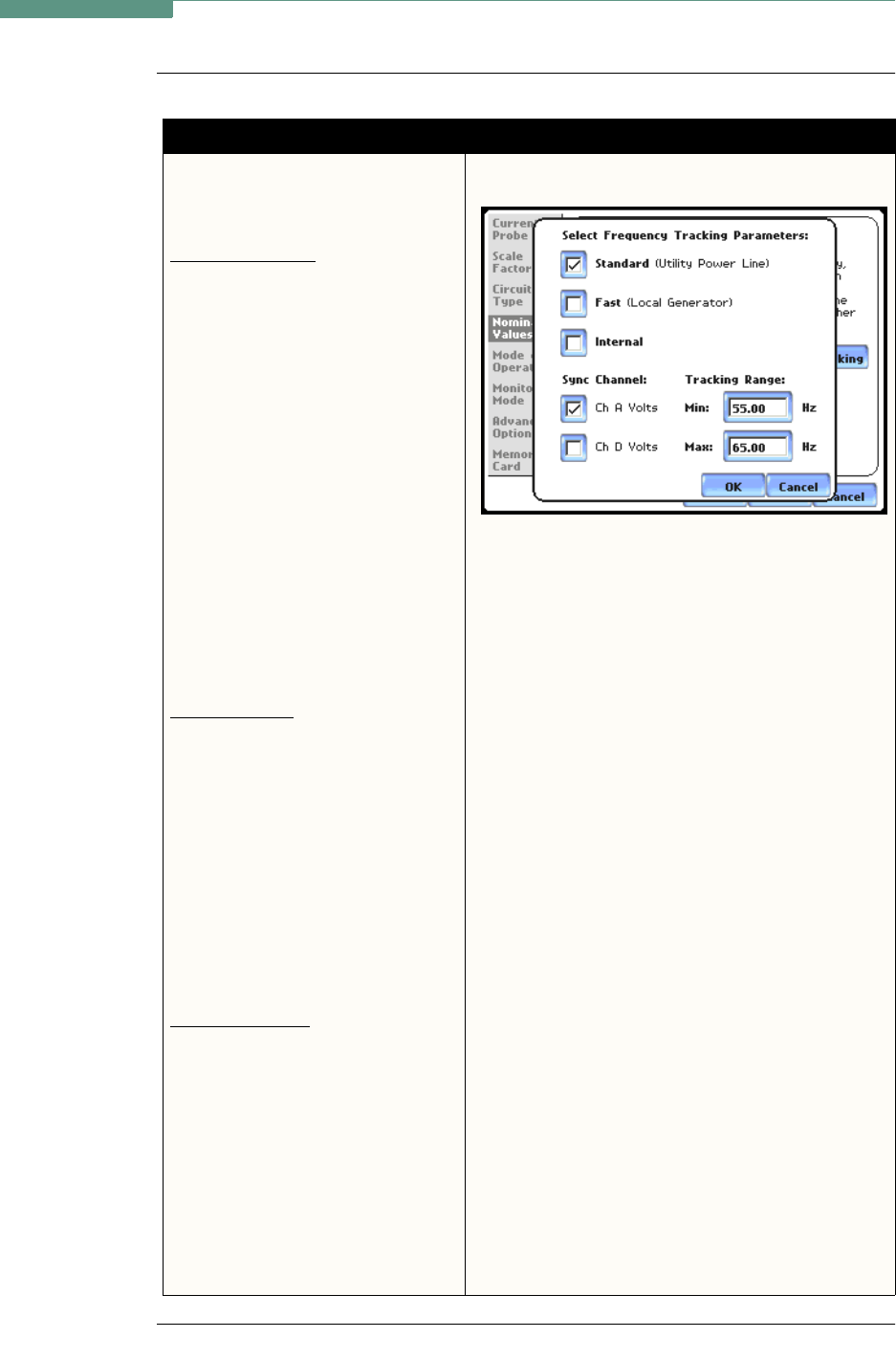Operation Manual
Table Of Contents
- Title Page - Energy Platform User Guide
- Table of Contents
- Chap 1 Getting Started
- Chap 2 Voltage Measurement Cable and Current Probe Connections
- Chap 3 View Real Time Data
- Chap 4 Instrument Settings
- Chap 5 Start Menu
- Chap 6 Advanced Setup Options
- Chap 7 View Event Data
- Chap 8 Reports
- Chap 9 Downloading Events
- Appendix A Optional Accessories
- Appendix B Technical Specifications
- Appendix C Battery Specifications and Replacement Procedure
- Appendix D User Replaceable Parts List
- Appendix E Common Circuit Connections
- Appendix F Event Classification
- Appendix G Energy Platform Menu Structure

5-15
CH 5/ Start Menu
Frequency,
voltage and
current settings
(continued)
Action... Result...
STEP 3: Tracking allows users to
set parameters to monitor changes
in frequency.
Frequency Class:
Check to select the power system
that define the frequency range of
distribution of the monitored
system.
• Standard frequency range is
16 Hz.
•
Fast
frequency range is 16-65 Hz.
• Internal uses the nominal
frequency when making
measurements where no
reference signal is available.
NOTE: Always enter a nominal
frequency that matches your
line frequency. This ensures
that if the Energy Platform
loses external sync, it will have
a corresponding internal sync.
Sync Channel:
Check to specify the external sync
mode to show which channel the
signal is connected to. See page
5-16 for more details on
frequency synchronization.
• Ch A Volts: When set to Ch A,
the unit attempts to sync to an
incoming voltage signal.
• Ch D Volts: When set to Ch D,
the unit only attempts to sync
to voltage Ch D.
Tracking Range:
The Min and Max refer to the
range of frequencies that the
phase locked loop will “hunt” if
sync is lost. See page 5-16 for
more details on frequency
tracking.
•Press OK to accept new
frequency tracking settings.
•Press Cancel to quit and return
to Nominal Values screen.
MARK110c










